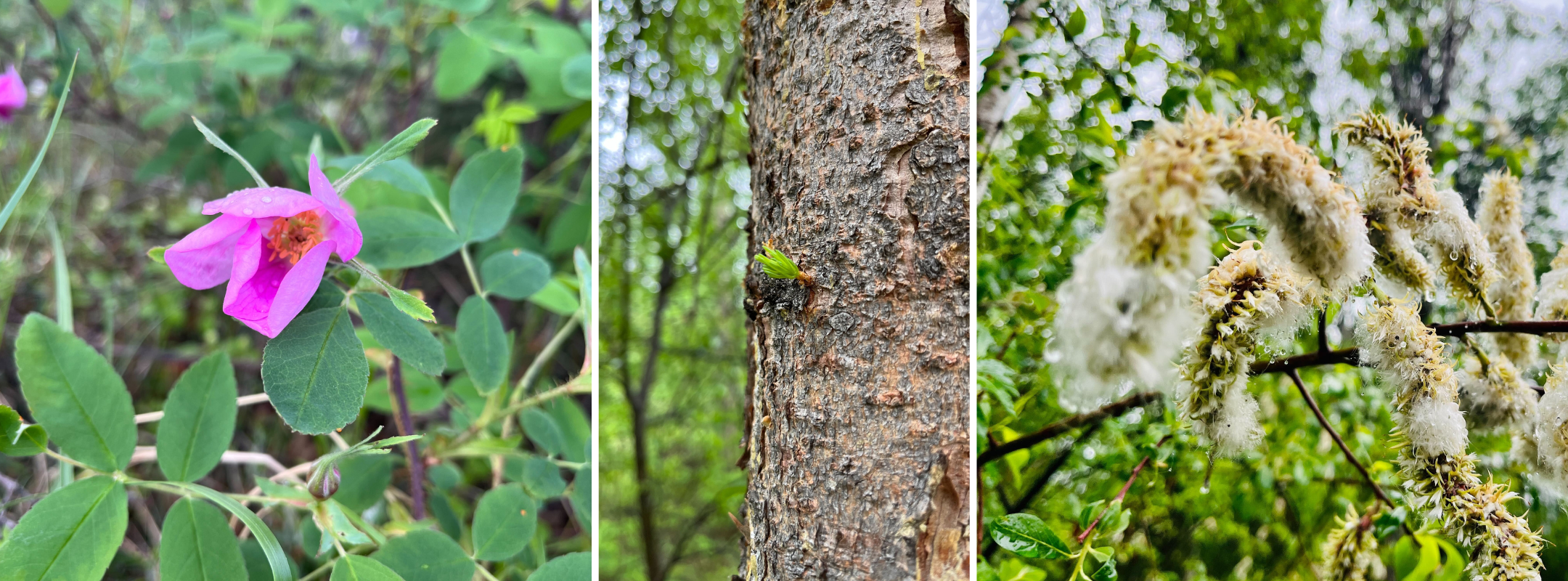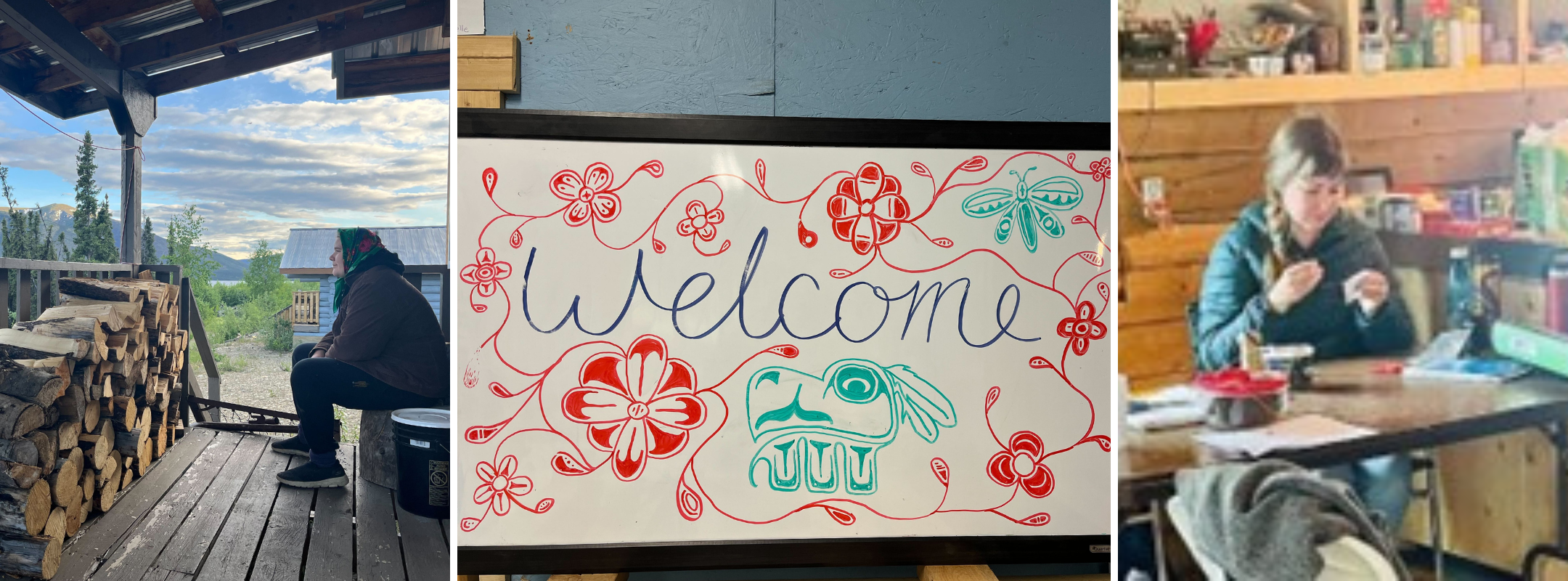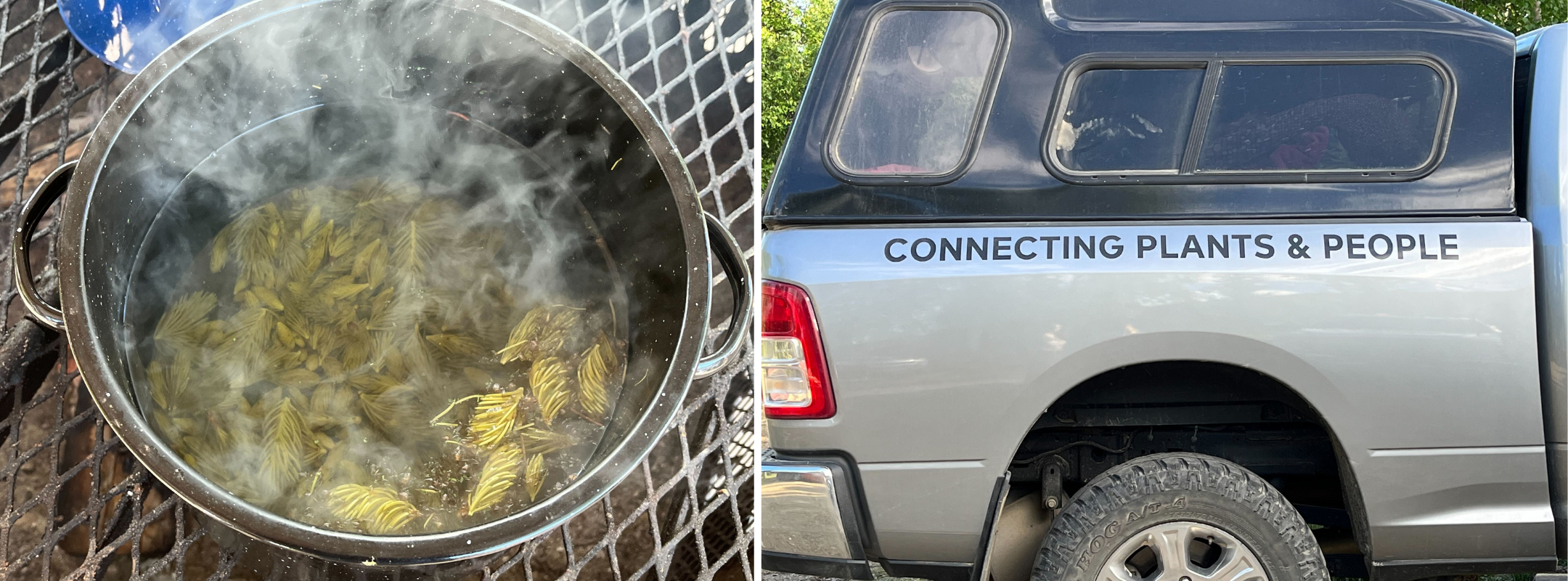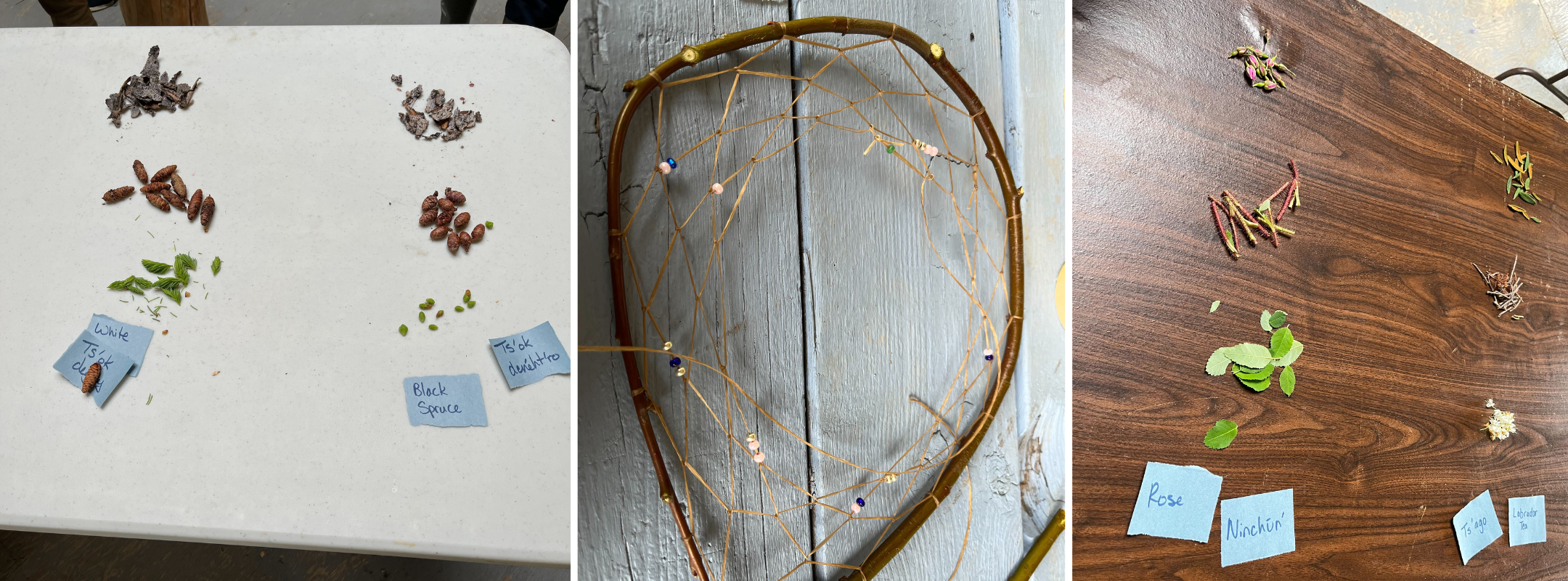Connecting to the Land Through Plants
Native plant reclamation with the First Nation of Na-Cho-Nyäk Dun and Yukon Seed and Restoration
Written by Stephanie Woods, Conservation Coordinator | September 20, 2023
The wild Ninchún (prickly rose) was just starting to open from bud to bloom as we turned onto the dirt road that meandered through an old forest fire burn site and traveled into a rich forest full of k’i (paper birch). The ts’ok denéht’ro (black spruce), t’o (trembling aspen), and blooming ts’ago (Labrador tea) guided the way to Ethel Lake, a sacred and alive place, on the traditional territory of the First Nation of Na-Cho Nyäk Dun (FNNND).

Ninchún (prickly rose), ts’ok (spruce), and k’ay (willow) at Ethel Lake.
A few weeks prior, CPAWS had joined the FNNND gathering to celebrate the thirtieth anniversary of signing their Final Agreement. Helaina Moses, a Councillor with FNNND, excitedly shared her passion for native seed, restoration, and youth training around the lunch table.
“You should come to see it for yourself,” she encouraged as she invited us to join the first three days of an eight-day youth training program.
Aiden, CPAWS Yukon’s summer intern, and I arrived the evening prior, providing time and space to introduce ourselves to the hosts, land, and water. I sat on the shores of Ethel Lake, breathing it in, while Aiden took the plunge into the cold and welcoming lake. We both took in the peace of the elements on the porch that evening, listening to the rustling of leaves in the wind and the evening song of birds. We said sweet dreams to the mosquitos and turned in for the night, excited for the following morning.

Aiden on the porch at Ethel Lake and a welcome sign he created for the arriving students. I worked on my first beadwork project before training started.
Northern Tutchone youth gathered for the event to learn about native plants and reclamation on their traditional territories. The program was developed in collaboration with Yukon Seed and Restoration, a First Nations-owned environmental restoration company, and the First Nation of Na-Cho Nyäk Dun.
Youth learned about plant identification, technical field skills, and planning for fieldwork in remote places. The group learned how to distinguish the layers of vegetation, for example, the difference between a herb, shrub, and tree layer when analyzing a 1m x 1m plant plot. Traditional Ecological Knowledge was woven through the technical teachings as the group learned the Northern Tutchone names for each plant, as well as how to harvest seeds in an honourable and reciprocal way — when we take, we give back.

On the evening of the second day, we gathered ts’ok tips to make spruce-tip tea, and ts’ago flowers to make Labrador tea. The plants became a part of us with each sip. Nanette Richard of Silverberry Pro’s truck (right) brought the message home.

Group activities included identifying three parts that make up each species of plant and the cultural practice of dreamcatcher weaving.
Before we departed Ethel Lake, Aiden and I participated in a group activity that we had helped prepare for throughout our stay. We were instructed to gather three separate parts of each species of plant, for example, the stem, leaves, and buds of Ninchún (prickly rose), or the cones, bark, and tips of degay ts’ok (white spruce), and so on. While harvesting, I offered a strand of my hair in reciprocity – when we take, we give back. During the group activity, each part of the plant, like each strand of a braid, came together to form the visualization of one whole species of plant.
The cover of Robin Wall Kimmerer’s famous novel Braiding Sweetgrass comes to mind. Traditional Ecological Knowledge, western science, and plants are the strands of a braid that are highly interconnected and stronger when woven into one. Each strand helps heal and strengthens the other, for we are in this work of healing, learning, and restoring, together. As we turned back onto the paved road back to Whitehorse, we marveled at all of the purple Shràttha (bear root) and yellow tl’o nan ka neshį’ (locoweed) in bloom on the roadside, lighting our way home.
The Northern Tutchone Seed Collection and Reclamation Training Initiative would not be possible without the dedicated support from our funders. This initiative is funded in part by the Government of Canada’s Skills and Partnership Fund.

